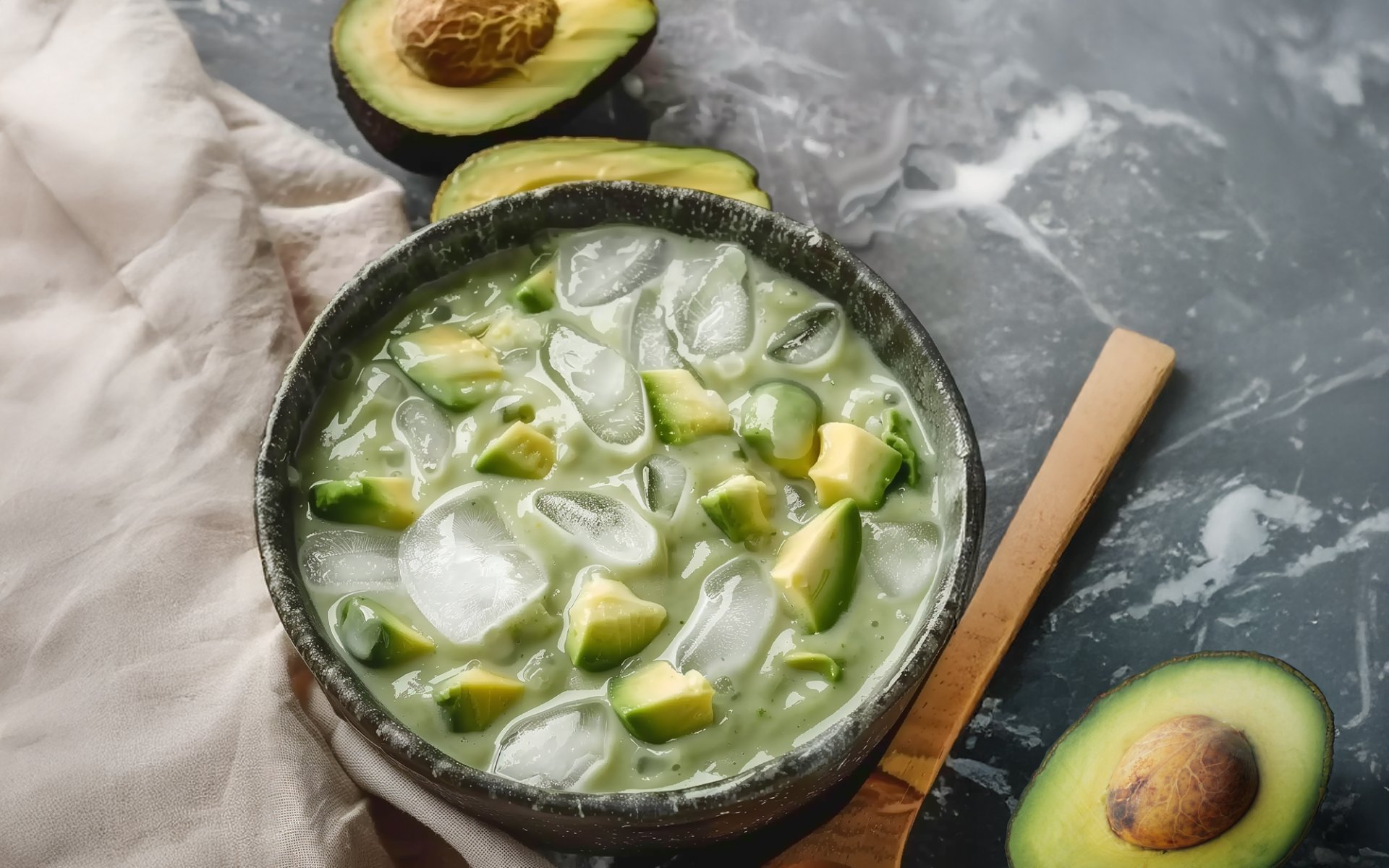Avocado Lamaw

Avocado Lamaw (or Abucado Lamaw) also known in English as Avocado and Milk (Avocado and Milk with Ice), can be considered both a dessert and a beverage. It's made from avocado flesh, sugar, ice, and milk (which can be fresh milk, evaporated milk, or powdered milk). This is a traditional Filipino way of consuming avocado.
Lamaw: The Origin of Filipino Sweetness
Lamaw, or its full name Buko Lamaw, is an ancient Filipino dessert made from young coconut meat (buko), coconut water, milk, and crackers or biscuits. It is typically prepared with freshly harvested coconuts and can be found at coconut stalls. There are also variations using other fruits like star apple or papaya. This dessert originated in the island of Mindanao and was influenced by the Merienda (Light meal) culture of Spanish farmers.
Spanish Influence and the Arrival of Avocado
Historically, Spain had numerous colonies and engaged in trade both with Spain itself and among its various colonies. Spanish communities were established in the Philippines as early as 1565, leading to over 300 years of colonial rule until 1898. During this period, the Philippines absorbed many Spanish influences, including language, religion, culture, and cuisine.
In addition to desserts like Lamaw, new ingredients gradually played a role in Filipino food culture. One such ingredient was avocado, which was introduced to the Philippines before 1700 by Mexico, also a Spanish colony at the time.
However, although Filipinos were familiar with avocado since the colonial era, serious cultivation of this fruit began after 1900, driven by the efforts of the United States after the Spanish-American War. Once avocado became widely cultivated, Filipinos started adapting it into existing dishes, including the desserts they had been consuming for centuries, like Lamaw. Avocado Lamaw is considered the first avocado-based dessert in the Philippines.
Avocado Lamaw: From Local to Global Recognition
The emergence of this dish made using avocado in desserts and beverages common in the Philippines and other Asian countries. Many dishes pairing avocado with milk have since increased in popularity, such as using it as a topping for shaved ice like Halo-halo, blending avocado flesh into shaved ice known as avocado con yelo, and making it into smoothies. In other countries, it's also used to make ice cream or milkshakes.
Avocado is a soft, smooth fruit with a buttery texture and a neutral taste, making it versatile for both savory and sweet dishes. Nevertheless, using avocado in desserts was not commonly known outside of Asia until 2022, a period when online platforms like TikTok were rapidly gaining popularity. One of the popular video categories was simple cooking or dessert recipes. A German influencer named Anna Paul posted a video introducing this ancient Filipino dessert for the first time.
The idea of soaking avocado in milk, sweetening it, and adding ice cubes surprised many online users, especially Westerners, leading to over 10 million views for Anna's video. This subsequently sparked a trend, with many other TikTok users attempting the recipe, resulting in various responses. While many who tried it were impressed, some who were unfamiliar with eating desserts with ice cubes in a bowl adapted it into their own smoothie versions. Regardless, Avocado Lamaw has become a globally recognized dish to this day.


